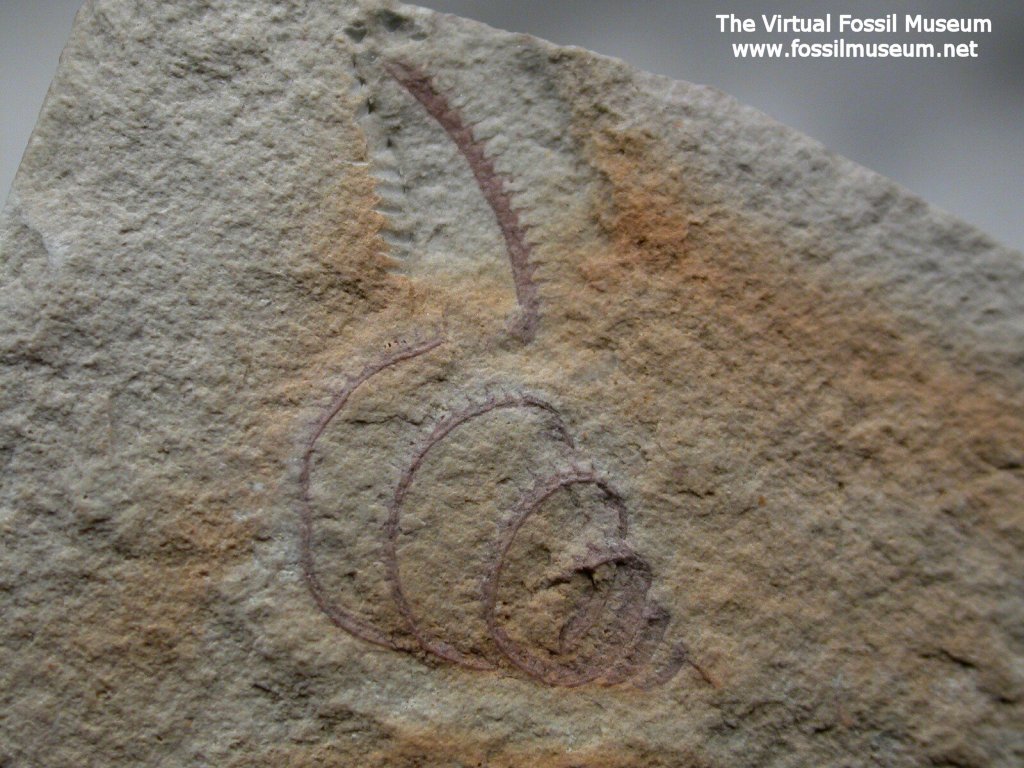 |
 |
 |
 |
 |
Produced
by the Population Genetics and Evolution class, Furman University |
||||
 |
 |
 |
 |
 |
Produced
by the Population Genetics and Evolution class, Furman University |
||||
 |
The
Ordovician: Graptolites |
 |
||
| Graptolites
are small organisms (17-30mm) that lived during the Paleozoic Era. They
are classified in the phylum Hemichordata, having a notochord, pharyngeal
gill slits, and a dorsal nerve chord like chordates but lacking a post-anal
tail (Waggoner 1997). They formed both planktonic and sedentary colonies
(Virtual Fossil Museum 2010), possibly held together by collagen exudate
like modern colonial hemichordates. Each animal nestled in a cup-like
structure ordered along the axis of the colony (Museum Victoria 2010).
They have a worldwide distribution. Because they are a common, numerous,
and speciose group, they are often used as "index fossils" to
designate specific geological periods. Page by Pete Calomiris |
  |
| Pictures provided by: The Virtual Fossil
Museum (LEFT) Spirograptus (RIGHT) Phyllograptus |
|
|
Virtual Fossil Museum. 2010. Ordovician Grapolites
Assemblage. Accessed February 2010. http://www.fossilmuseum.net/fossils
/hemichordata/Phyllograptus-archaios/Phyllograptusarchaios.htm Waggoner B. 1997. Introduction to the Hemichordata. University of California Museum of Paleontology. Accessed February 2010. Victoria Museum Australia. 2010. Graptolites. Accessed February 2010. |